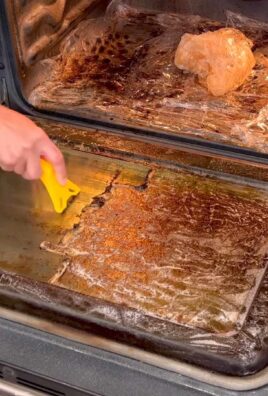Amish cleaning tips – ever wondered how the Amish keep their homes so spick-and-span without relying on a ton of modern gadgets and harsh chemicals? I know I have! For generations, the Amish have passed down simple, effective cleaning methods rooted in resourcefulness and a deep connection to nature. These aren’t just cleaning hacks; they’re a testament to a lifestyle that values simplicity and sustainability.
Think about it: in a world saturated with expensive cleaning products promising miraculous results, wouldn’t it be refreshing to go back to basics? That’s where these Amish cleaning tips come in. We’re talking about time-tested techniques that are not only gentle on your home but also on your wallet and the environment.
I’m excited to share some of the most ingenious and practical Amish cleaning secrets I’ve uncovered. From using vinegar and baking soda to harness the power of sunshine, these DIY tricks will transform your cleaning routine. Get ready to discover how to achieve a sparkling clean home the Amish way – naturally, affordably, and effectively!

Unlocking Amish Cleaning Secrets: A DIY Guide to a Sparkling Home
Hey there, fellow cleaning enthusiasts! I’ve always been fascinated by the simplicity and effectiveness of traditional methods, and the Amish community holds a treasure trove of cleaning wisdom. They’ve perfected the art of keeping a spotless home using natural ingredients and time-tested techniques. I’m excited to share some of my favorite Amish-inspired cleaning hacks that I’ve incorporated into my own routine. Get ready to ditch those harsh chemicals and embrace a cleaner, greener, and more budget-friendly way to keep your home sparkling!
The Amish Cleaning Philosophy: Simplicity and Sustainability
Before we dive into the nitty-gritty, let’s talk about the core principles behind Amish cleaning. It’s all about:
* Natural Ingredients: Think vinegar, baking soda, lemon juice, and essential oils. These are gentle on your home, your family, and the environment.
* Resourcefulness: Making the most of what you have and minimizing waste. Repurposing old cloths, using simple tools, and avoiding unnecessary packaging are key.
* Thoroughness: A focus on deep cleaning and preventative maintenance to keep things tidy and manageable.
* Simplicity: Avoiding complicated routines and focusing on effective, straightforward methods.
Hack #1: The All-Purpose Vinegar Cleaning Spray
This is my go-to for almost everything! It’s incredibly versatile and effective at cutting through grease, grime, and odors.
What you’ll need:
* Empty spray bottle
* White vinegar
* Water
* Optional: Essential oils (lemon, lavender, tea tree)
Step-by-step instructions:
1. Prepare the Solution: In your spray bottle, combine equal parts white vinegar and water. For example, if you’re using a 16-ounce bottle, add 8 ounces of vinegar and 8 ounces of water.
2. Add Essential Oils (Optional): If you want to mask the vinegar smell and add some extra cleaning power, add 10-20 drops of your favorite essential oil. Lemon, lavender, and tea tree are great choices for their antibacterial and antiviral properties.
3. Shake Well: Secure the spray nozzle and shake the bottle well to combine the ingredients.
4. Spray and Wipe: Spray the solution onto the surface you want to clean and let it sit for a few seconds. Then, wipe it clean with a damp cloth or sponge.
5. Enjoy the Sparkle: Admire your freshly cleaned surface! This spray is safe to use on most surfaces, including countertops, sinks, toilets, and floors. However, avoid using it on marble or granite, as the acidity can damage these materials.
Hack #2: Baking Soda Scrub for Tough Stains
Baking soda is a powerhouse when it comes to tackling stubborn stains and grime. I use it in the kitchen, bathroom, and even for laundry!
What you’ll need:
* Baking soda
* Water
* Old toothbrush or scrub brush
* Cloth or sponge
Step-by-step instructions:
1. Make a Paste: In a small bowl, mix baking soda with enough water to form a thick paste. The consistency should be similar to toothpaste.
2. Apply to the Stain: Apply the baking soda paste directly to the stain or area you want to clean.
3. Scrub Gently: Use an old toothbrush or scrub brush to gently scrub the area. For tougher stains, let the paste sit for 10-15 minutes before scrubbing.
4. Rinse and Wipe: Rinse the area thoroughly with water and wipe it clean with a damp cloth or sponge.
5. Repeat if Necessary: If the stain is still visible, repeat the process.
Where to use it:
* Oven: To clean baked-on food and grease.
* Sink: To remove stains and odors.
* Tile grout: To brighten and remove mildew.
* Bathtub and shower: To remove soap scum and hard water stains.
* Burnt pots and pans: To loosen burnt food particles.
Hack #3: Lemon Juice for Shine and Disinfection
Lemon juice is a natural disinfectant and degreaser that leaves a fresh, citrusy scent. I love using it to clean my cutting boards and brighten my stainless steel appliances.
What you’ll need:
* Lemon(s)
* Water
* Spray bottle (optional)
* Cloth or sponge
Step-by-step instructions:
1. Prepare the Lemon Juice: Squeeze the juice from one or more lemons into a bowl or measuring cup.
2. Dilute with Water (Optional): If you’re using lemon juice on delicate surfaces, dilute it with equal parts water. You can also pour the diluted lemon juice into a spray bottle for easier application.
3. Apply to the Surface: Apply the lemon juice directly to the surface you want to clean.
4. Let it Sit: Let the lemon juice sit for a few minutes to allow it to work its magic.
5. Wipe Clean: Wipe the surface clean with a damp cloth or sponge.
6. Dry Thoroughly: Dry the surface with a clean cloth to prevent water spots.
Where to use it:
* Cutting boards: To disinfect and remove odors.
* Stainless steel appliances: To brighten and remove fingerprints.
* Microwave: To loosen food splatters and deodorize.
* Windows and mirrors: To create a streak-free shine.
* Garbage disposal: To freshen and clean.
Hack #4: Cleaning Wood Furniture with Olive Oil and Lemon Juice
This is a fantastic way to nourish and protect your wood furniture while giving it a beautiful shine.
What you’ll need:
* Olive oil
* Lemon juice
* Soft cloth
Step-by-step instructions:
1. Mix the Solution: In a small bowl, combine 1/4 cup olive oil with 1 tablespoon of lemon juice.
2. Apply to the Furniture: Dip a soft cloth into the mixture and gently rub it onto the wood furniture in a circular motion.
3. Buff to a Shine: Use a clean, dry cloth to buff the furniture to a beautiful shine.
4. Repeat as Needed: Repeat the process as needed to clean and polish all of your wood furniture.
Important Note: Always test this mixture on an inconspicuous area of your furniture first to ensure it doesn’t damage the finish.
Hack #5: Freshening Carpets with Baking Soda and Essential Oils
This is a simple and effective way to deodorize and freshen your carpets without using harsh chemicals.
What you’ll need:
* Baking soda
* Essential oils (lavender, eucalyptus, tea tree)
* Sifter or shaker
* Vacuum cleaner
Step-by-step instructions:
1. Prepare the Baking Soda Mixture: In a bowl, combine 1 cup of baking soda with 10-20 drops of your favorite essential oil. Mix well to distribute the oil evenly.
2. Sprinkle on the Carpet: Use a sifter or shaker to sprinkle the baking soda mixture evenly over your carpet.
3. Let it Sit: Let the baking soda sit on the carpet for at least 30 minutes, or even overnight for a deeper clean.
4. Vacuum Thoroughly: Vacuum the carpet thoroughly to remove all of the baking soda.
Tips for Success:
* Choose essential oils that have antibacterial and antifungal properties, such as lavender, eucalyptus, or tea tree.
* For heavily soiled carpets, you can add a small amount of borax to the baking soda mixture for extra cleaning power.
* Always test the mixture on a small, inconspicuous area of your carpet first to ensure it doesn’t cause any discoloration.
Hack #6: Cleaning Windows with Vinegar and Newspaper
This is an old-fashioned trick that still works wonders for achieving streak-free windows.
What you’ll need:
* White vinegar
* Water
* Spray bottle
* Newspaper
Step-by-step instructions:
1. Prepare the Cleaning Solution: In a spray bottle, combine equal parts white vinegar and water.
2. Spray the Windows: Spray the window with the vinegar solution.
3. Wipe with Newspaper: Crumple up a sheet of newspaper and use it to wipe the window clean. The newspaper will absorb the dirt and grime without leaving streaks.
4. Repeat if Necessary: Repeat the process if necessary to remove stubborn dirt or streaks.
Why Newspaper Works:
Newspaper is made from wood pulp, which is a natural absorbent. It also has a slightly abrasive texture that helps to remove dirt and grime without scratching the

Conclusion
So, there you have it! Embracing these time-tested Amish cleaning tips isn’t just about saving money; it’s about connecting with a simpler, more sustainable way of life. It’s about rediscovering the power of natural ingredients and the satisfaction of a truly clean home, achieved without harsh chemicals or complicated processes. These aren’t just cleaning hacks; they’re a philosophy, a gentle nudge towards a more mindful approach to maintaining your living space.
Why is this a must-try? Because it works. Plain and simple. You’ll be amazed at the effectiveness of vinegar, baking soda, and elbow grease when combined with the wisdom passed down through generations. You’ll breathe easier knowing you’re not filling your home with potentially harmful fumes. And you’ll likely find a sense of accomplishment in creating your own cleaning solutions, tailored to your specific needs.
Consider these variations to personalize your Amish cleaning experience:
* **Infused Vinegar:** Add citrus peels (lemon, orange, grapefruit) to your vinegar for a more pleasant scent and added cleaning power. Let it steep for a few weeks before using.
* **Essential Oil Boost:** A few drops of your favorite essential oil (lavender, tea tree, eucalyptus) can be added to your cleaning solutions for fragrance and potential antibacterial benefits.
* **DIY Laundry Detergent:** Combine grated castile soap, washing soda, and borax for a simple and effective laundry detergent. Adjust the ratios to suit your water hardness.
* **Wood Polish Alternative:** Mix olive oil and lemon juice for a natural wood polish that will leave your furniture gleaming.
These Amish cleaning tips are more than just a trend; they’re a return to basics, a celebration of resourcefulness, and a testament to the enduring power of simple solutions. They offer a refreshing alternative to the often overwhelming world of commercial cleaning products.
We wholeheartedly encourage you to give these methods a try. Start with one or two that resonate with you and see the difference they can make in your home and your well-being. You might be surprised at how much you enjoy the process and how effective these simple techniques can be.
Don’t just take our word for it! Experiment, adapt, and discover your own favorite Amish cleaning secrets. And most importantly, share your experiences with us! We’d love to hear your tips, tricks, and success stories in the comments below. Let’s build a community of mindful cleaners, all inspired by the wisdom of the Amish. Let us know what worked for you, what challenges you faced, and any variations you discovered along the way. Your insights could help others embrace this natural and effective approach to cleaning.
Frequently Asked Questions (FAQs)
What makes Amish cleaning tips different from other cleaning methods?
Amish cleaning tips stand apart due to their emphasis on natural, readily available ingredients and a commitment to simplicity. Unlike many modern cleaning products that rely on harsh chemicals and complex formulations, Amish methods utilize ingredients like vinegar, baking soda, and castile soap, which are gentle on the environment, safe for families, and often more cost-effective. The focus is on resourcefulness and sustainability, reflecting a deep respect for the natural world.
Are these cleaning methods truly effective?
Absolutely! While the ingredients may seem simple, their cleaning power is undeniable. Vinegar, for example, is a natural disinfectant and degreaser, while baking soda is a mild abrasive and deodorizer. When used correctly, these ingredients can tackle a wide range of cleaning tasks, from removing stubborn stains to sanitizing surfaces. The key is to understand the properties of each ingredient and how to use them effectively. Many people are surprised by how well these simple solutions work, often outperforming commercial cleaners in certain situations.
Are Amish cleaning tips safe for children and pets?
One of the biggest advantages of using Amish cleaning tips is their safety. Because they rely on natural ingredients, they are generally much safer for children and pets than commercial cleaners, which can contain harsh chemicals that can be harmful if ingested or inhaled. However, it’s still important to exercise caution and keep cleaning solutions out of reach of children and pets. Even natural ingredients can be irritating if they come into contact with sensitive skin or eyes. Always supervise children when they are helping with cleaning and ensure that pets are kept away from cleaning areas until surfaces are dry.
Can I use these cleaning methods on all surfaces?
While Amish cleaning tips are generally safe and versatile, it’s important to test them on a small, inconspicuous area before applying them to the entire surface. Some surfaces, such as marble or granite, can be damaged by acidic cleaners like vinegar. Similarly, wood furniture may require special care and should be cleaned with gentle, oil-based solutions. Always read the manufacturer’s instructions for your surfaces and appliances before using any cleaning product, natural or otherwise.
How do I get rid of the vinegar smell after cleaning?
The smell of vinegar can be a deterrent for some people, but it dissipates quickly. To minimize the odor, you can add a few drops of essential oil to your vinegar solution. Citrus oils, such as lemon or orange, are particularly effective at masking the vinegar smell. You can also open windows and doors to ventilate the area after cleaning. The vinegar smell will typically disappear within a few hours, leaving your home fresh and clean.
Where can I find the ingredients for these cleaning solutions?
The ingredients for Amish cleaning tips are readily available at most grocery stores and pharmacies. Vinegar, baking soda, and castile soap are common household items that can be found in the cleaning aisle or the baking section. You can also purchase these ingredients in bulk online for added convenience and cost savings. Look for high-quality, natural ingredients whenever possible to ensure the best results.
Can I use these cleaning methods to clean my oven?
Yes, you can use Amish cleaning tips to clean your oven! A popular method involves making a paste of baking soda and water and applying it to the interior of the oven. Let the paste sit overnight, then scrub away the grime with a damp sponge. You can also use vinegar to help loosen stubborn stains. Be sure to remove all traces of the baking soda paste before using your oven again. This method is a safe and effective alternative to harsh oven cleaners.
How do I adapt these tips for heavy-duty cleaning?
For heavy-duty cleaning, you can increase the concentration of your cleaning solutions or combine multiple ingredients for added power. For example, you can use a stronger vinegar solution to tackle tough grease stains or combine baking soda and vinegar to create a powerful scrubbing paste. You can also add borax to your laundry detergent for extra cleaning power. Remember to always test your cleaning solutions on a small, inconspicuous area before applying them to the entire surface.
What are some other uses for these natural cleaning ingredients?
The versatility of vinegar, baking soda, and castile soap extends far beyond cleaning. Vinegar can be used as a natural fabric softener, a weed killer, and a hair rinse. Baking soda can be used to freshen carpets, deodorize refrigerators, and relieve heartburn. Castile soap can be used as a body wash, a shampoo, and a pet shampoo. These ingredients are truly multi-purpose and can be used in countless ways around the home.
How can I make my own all-purpose cleaner using Amish cleaning tips?
Creating your own all-purpose cleaner is simple! Combine equal parts of water and vinegar in a spray bottle. Add a few drops of your favorite essential oil for fragrance. Shake well before each use. This cleaner can be used on a variety of surfaces, including countertops, sinks, and floors. It’s a safe, effective, and affordable alternative to commercial all-purpose cleaners. Remember to test it on an inconspicuous area first, especially on delicate surfaces.





Leave a Comment